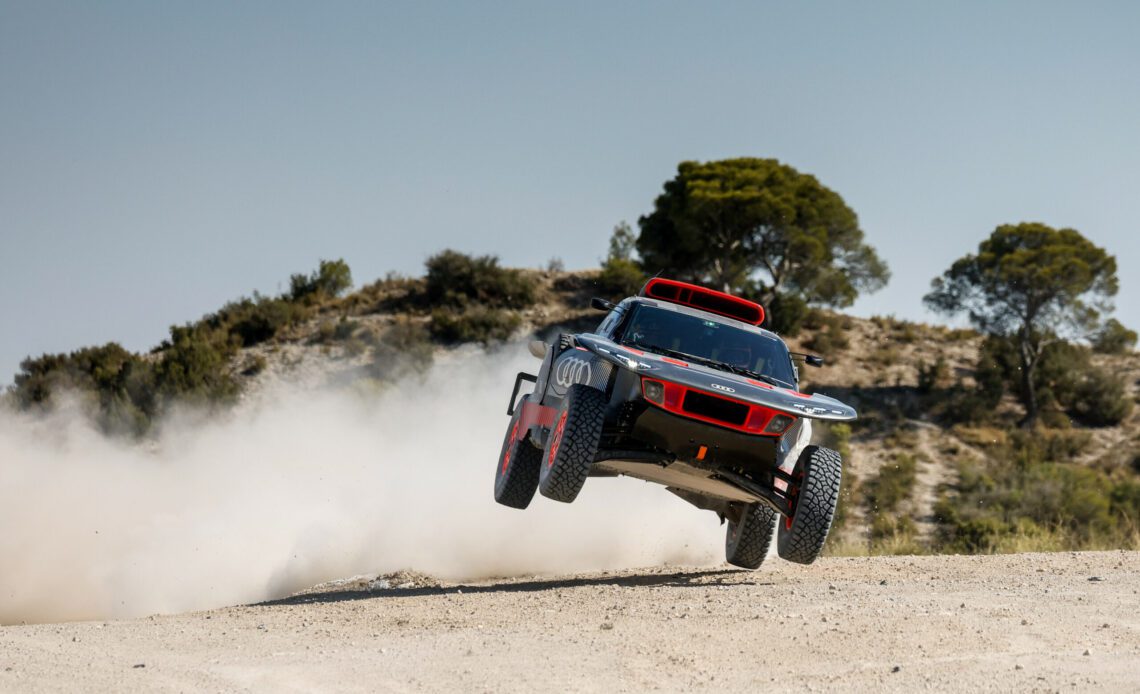The Audi RS Q e-Tron won its first desert rally in Abu Dhabi, and now the next evolution is ready. The innovative prototype presents itself significantly improved for the 2022 Morocco Rally and the 2023 Dakar Rally. The body is new and features enhanced aerodynamics, lower weight and centre of gravity.
New operating strategies improve the efficiency of the electric drivetrain. The driver and co-driver benefit from more effortless operation in the interior and when changing wheels. Following these evolutions, the RS Q e-Tron now bears the abbreviation E2.
‘We’ve managed a good debut at the Dakar with the Audi RS Q e-Tron and our first stage victories in a motorsport discipline that is new to us,’ says Rolf Michl, Managing Director of Audi Sport GmbH and responsible for motorsport at Audi. ‘The entire team is working together and pulling in the same direction. As is usual at such an early stage, the drivers, co-drivers, and technicians quickly agreed on the next development targets. We have summarised the result in a new evolution package – the RS Q e-Tron E2.’
The RS Q e-Tron E2 launch marks the beginning of the second phase of the development program. In October 2022, Team Audi Sport will prepare for the 2023 Dakar Rally with the new prototype in Morocco. ‘The Audi RS Q e-Tron E2 does not adopt a single body part from its predecessor,’ says Axel Löffler, Chief Designer of the RS Q e-Tron. ‘We are doing away with the rear hood’s underflow to the B-pillars’ left and right. This solution reduces weight with modified lay-ups and optimised fabric layers of composite material.’
To comply with the prescribed interior dimensions, the cockpit, previously narrowly recessed towards the roof, is now significantly wider. The front and rear hoods have also been redesigned. This is accompanied by the lowering of the vehicle’s centre of gravity. ‘The T1U prototypes have to weigh 2,100 instead of 2,000 kilograms in the future,’ continues Löffler. ‘Given that the first generation of the RS Q e-Tron was overweight, it was still necessary to save several dozen kilograms.’
The aerodynamic concept in the body below the hood is entirely new. Its widest point is at the height of the cockpit, while the body tapers significantly towards the front and rear. Audi has now dispensed with the part of the fenders behind the front wheels and formed a transition to the door. Internally, this structure was called the ‘elephant foot.’ As a…
Click Here to Read the Full Original Article at Racecar Engineering…

